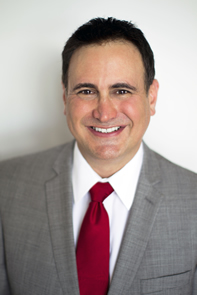Los Angeles Downtown News
Downtown LA Real Estate Update |

State of the City
By David Kean

In less than 11 years, Downtown Los Angeles has gone from desolate and dreary to hip, hot, and happening. Years ago, at five p.m., sidewalks would basically roll up and the area shut down. Now, a mixture of residents walking their dogs, convention guests, and patrons sampling chic new restaurants or nightclubs can be seen at all hours. The transformation seemingly took place overnight, but years of planning have made Downtown LA one of the region's most talked-about spots. Since 1999, over $15 billion in private sector investment has poured into the area, helping to create a vibrant and diverse community appealing to both businesses and residents. The primary catalyst for the resurgence of residential development was the city's implementation of the Adaptive Reuse Ordinance. The ordinance offered developers tax incentives, expedited permit approval processes, and adjusted zoning and code requirements. This made it possible to convert historic and economically obsolete buildings into residential, mixed-use projects, many of them loft-style condominium complexes with added amenities like pools, spas, gyms, and screening rooms. At the same time, commercial development was spurred by the opening of AEG's Staples Center, which drew national attention to downtown by hosting the Lakers, Kings, and major entertainment events. Concurrently, luxury apartment communities were built by G.H. Palmer, the first developer in decades to offer upscale living in downtown. The boom culminated in 2007 with the opening of the area's first supermarket in 57 years and LA Live in 2008, with its multiple concert venues, movie theaters, restaurants, nightclubs, and hotels, including the Marriott and Ritz-Carlton. With the plethora of new entertainment possibilities within proximity of the Convention Center, LA was able to compete for national conventions. The economic downturn negatively impacted development, but by then, a critical mass had been established. Downtown residents numbered approximately 43,000, compared to 18,700 in 1999. The false start that happened in the late 1980s was thus avoided. As a result of overzealous, late-to-the-game condo investors and residential projects that had the misfortune of opening after the real estate bubble popped, a favorable buying environment now exists. Current residential buyers include investors (foreign and domestic), as well as empty-nesters, first-time homeowners, second-home buyers, and parents buying lofts for their children in lieu of student housing. All are looking for remarkable deals, and there are plenty of bargains to be had. Despite being a major business hub, Downtown actually has a small-town feel. Several residential developments have wine and book clubs, yoga groups, and weekend pub crawls. It's not uncommon to strike up a conversation with a stranger at the supermarket or dry cleaners. Downtown consists of 15 tight-knit micro-communities. Each neighborhood has its own distinct flavor and demographic. Three of the largest residential hubs are South Park, The Historic Core, and The Arts District. South Park, home to the Staples Center and easily accessible to USC, is the most developed section, featuring mostly newly built, loft-style, high-rise developments, with a handful of buildings converted into lofts. The Historic Core, with its art galleries and boutiques, is the most like San Francisco and New York in architecture and energy. The majority of living options are converted historic buildings. The Arts District was created by artists for artists, and offers larger, raw spaces in converted industrial buildings and warehouses. In general, prices have dropped from a high of $576 per square foot in 2006 to approximately $357. Recent sales activity (according the Multiple Listing Service) shows lofts selling from $85,000 to $2,150,000 for a penthouse. The median price is $330,000. One bedroom unit sales are surpassing two bedrooms by a 6 to 1 ratio. The expansion of the residential and hospitality sectors have created a foundation for the growth of the retail market. An area to watch is the 7th Street corridor. Once the hub of Los Angeles shopping, 7th Street is located within walking distance of thousands of hotel rooms, mass transit, and the heart of the financial district. Hal Bastian, Senior Vice President and Director of Economic Development of the Downtown Center Business Improvement District, is spearheading the 7th Street Retail Recruitment Initiative and has been directly involved with the opening of dozens of new downtown businesses. The initiative is a five-year plan to bring independent retailers to 7th Street. According to Mr. Bastian, the goal is "to create a unique retail environment that is different than any other place in Southern California." Select soft goods retailers are being recruited from the Abbot Kinney, Melrose Avenue, and Ventura Boulevard shopping districts. Mr. Bastian advises, "When contemplating opening a business in downtown Los Angeles, it's important to have capital for building out the store and a marketing budget. It's not enough just to open your doors. You actually have to go and market and create interest in whatever it is that you are selling." With many major projects in the pipeline, such as the recently announced Eli Broad Art Museum on Bunker Hill and the one billion dollar rebuild of the Wilshire Grand Hotel, the community remains poised for future investment and expansion. While Downtown has always been a legal, banking, and cultural hub, the residential population base continues to grow and evolve, creating new needs in the marketplace for core and supporting businesses. These signs of continued growth promise to keep Downtown on the forefront of urban economic renewal. |
| David Kean is a Beverly Hills-based Realtor, small business consultant, and Downtown resident since 2002. |
DAVID KEAN & ASSOCIATES |
|
Specializing in high-end residential properties throughout the Los Angeles area (Beverly Hills, Hollywood Hills/Sunset Strip/Doheny, Hancock Park, Bel Air, Wilshire Corridor, Brentwood, Pacific Palisades, Century City, Downtown Los Angeles)
David represents both buyers and sellers of residential properties. Please contact him at 213/422-4516 or by e-mail for further information on how he can assist you.

